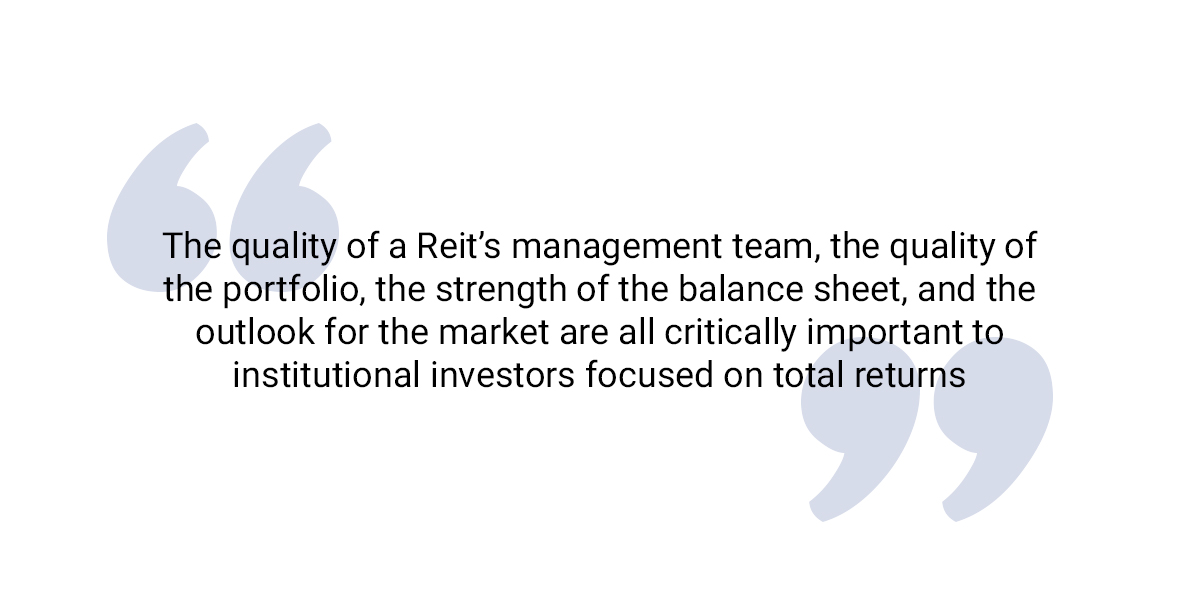Specialist brings international lessons to the FII market
Creating a Reit vehicle which attracts the interest of global institutional investors is one of Sullivan's suggestions.
The market for real estate investment funds (FIIs) in Brazil has been evolving intensely in recent years, but there are still important steps to be taken to consolidate it. Nothing better, therefore, than extracting and applying practical learning from countries where this segment – known as Real Estate Investment Trusts, or simply Reits – is already fully established, as is the case of the United States.
"The most important lesson is that Reit capital is global", says Jim Sullivan. "Overall, creating a Reit vehicle that is easy for investors to understand, and which attracts the interest of institutional investors from Europe, North America, Asia, Europe and Australia, is a way to ensure that the FII and Reit markets expand in an exciting way", he adds.
Sullivan is the president of Advisory & Consulting at Green Street Advisors. The group provides strategic advice to commercial real estate owners and investors located in the US and around the globe. Clients include private real estate companies considering IPOs, publicly traded and non-traded Reits seeking strategic advice, C-corps considering Reit conversions/spin-offs, operating companies evaluating real estate monetization strategies, as well as investment vehicles including hedge funds, long-only funds, pension funds, private equity firms, and family offices.
The executive joined the group in 1994, and has accumulated extensive experience, having lead research in the Reits field in a variety of property sectors including, for example, offices, industrial, self-storage, malls, and healthcare. He granted an exclusive interview to GRI Hub and is preparing to come to Brazil to participate as the keynote speaker of Fórum GRI de Fundos Imobiliários 2019, scheduled for August 21, in São Paulo. Check it out:
How big are the American and the global Reit markets today? And what is their potential over the next ten years?
The global Reit market is approaching an equity market capitalization of US$2 trillion, and 35 countries now have active Reit legislation. The US market represents roughly half of the global total. Reits in the US own approximately US$1.5 trillion of commercial real estate assets. The potential growth of the Reit market is sizeable since Reits represent a liquid, transparent vehicle through which investors can own high-quality real estate.
What have been the biggest challenges in the consolidation process of the American Reit market so far? Which ones still need to be addressed?
The most important responsibility for management and the board of directors of a Reit is to do the right thing for the company’s owners – its shareholders. Commercial real estate companies can benefit from economies of scale in a variety of ways. In the US, we still have too many Reits that are suboptimal in terms of their size. Yet, consolidation through mergers is often impeded by social issues – who is going to be the CEO, which Board members will keep their positions, etc.
Were there any significant differences in American process in comparison to other developed countries experiences? Which ones?
A very important reason that the US Reit market has thrived is that most companies are “internally managed”, which means that the executives who run the company everyday are direct employees of the Reit. These executives tend to own significant amounts of the Reit’s shares, and their pay usually includes additional equity in the Reit. This makes their interests fully aligned with shareholders. In many other countries, Reits are “externally managed”, which means that the Reit pays a fee to separate entity to run the Reit’s business day to day. The “externally managed” structure often creates a misalignment of interest between shareholders and the executives who make the critical portfolio and balance sheet decisions on behalf of the Reit. Market participants should look to the growth of the US market – and the very important difference between “internal” and “external” structures – as they consider best practices for their market.
What major lessons do the evolution of the American Reit market teach emerging economies such as Brazil?
The most important lesson is that Reit capital is global – Reit portfolio managers are looking to invest capital in markets where they think they can get the highest risk-adjusted returns. But a market will only attract this international capital if its Reit structure invites best-in-class real estate companies to operate in the public market. Alignment of interest between management and shareholders, high-quality disclosure of the company’s performance, responsible balance sheet management, and appropriate allocation of capital to acquisitions and development are all pre-requisites to attracting international capital. And if that capital arrives, it can help lower the cost of capital for all the Reits operating in those emerging economies.
What is the relevance of institutional investors in the American Reit market and in other developed countries? Can one expect something similar in emerging markets as well?
Reits represent a very efficient way for institutional investors to own a diversified, liquid portfolio of commercial real estate compared to the alternative of directly owning buildings or investing in funds that buy buildings. As a result, institutional investors own roughly one half of total Reit shares in the US. In many emerging markets, Reits have been structured to appeal to non-institutional investors, primarily those focused on collecting income through dividends. For some institutional investors, dividends are important. But most focus on total returns – dividends plus share price appreciation. So the quality of a Reit’s management team, the quality of the portfolio, the strength of the balance sheet, and the outlook for the market are all critically important to institutional investors focused on total returns.

The Mexican Fibras became a reference in Latin America. In your point of view, what were the key factors for this successful case? And what aspects could be replicated in Brazil?
The Mexican Fibras are still early in their evolution. Some of the initial companies have achieved success, but others have struggled. A primary reason has been the potential conflicts of interest created through the “external management” structure. Some Fibras, such as FIBRA Inn, have taken the step of “internalizing” their management. That is a basic step to attracting international Reit capital. Growth in the commercial real estate market should be impressive over the next 10-20 years. Fibras have a chance to be leading players in Mexico, but the industry will have to improve upon some of its structural shortcomings for the industry to grow.
What is the potential of the FIIs/Reit market in Brazil, in particular, and in Latin America as a whole in the short, medium and long term?
The publicly listed real estate market has a future in Latin America that could be very exciting. But that potential will require Reits and Reit-like vehicles to be structured the right way. Alignment of interests, transparency, tax efficiency, and long-term vision are all important ingredients to creating a successful market. Real estate players who want to simply use the public market as a means of taking advantage of investors will surely fail, and those missteps will create high hurdles that subsequent companies will need to overcome. Economic growth will spur development, which will generate a growing appetite for real estate capital in Brazil and across Latin America. Well-structured Reits should attract more than their fair share of attractively priced capital.
What are your main recommendations for further developing the FII market in Brazil and other Latin American countries in the coming years?
My recommendation to the industry would be to import best practices from successful, publicly listed real estate markets from around the world. While each country, including Brazil, needs to establish a set of Reit rules that works for its own market, there are impressive success stories – including the US – that provide valuable lessons on what works. Conversely, there are markets where Reit legislation has been in place for many years, but few companies have thrived. Understanding what those markets did wrong can be very instructive. Overall, creating a Reit vehicle that is easy for investors to understand, and which attracts the interest of institutional investors from Europe, North America, Asia, Europe and Australia, is a way to ensure that the FII and Reit markets expand in an exciting way.
Interview granted to GRI Hub editor-in-chief Giovanna Carnio
GRI Forum of Real Estate Funds 2019

In addition to Jim Sullivan’s participation, the Fórum GRI de Fundos Imobiliários 2019' program is filled with discussions aimed at broadening investors’ knowledge about this important industry. Learn all about the event.







